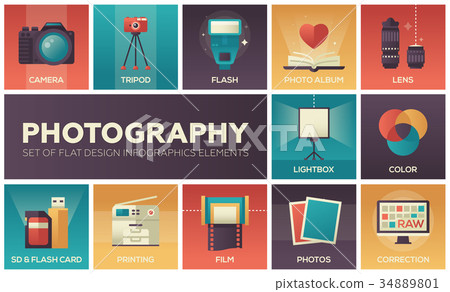What Every Digital Photographer Ought To Learn About Lighting
What Every Digital Photographer Ought To Learn About Lighting
Blog Article
Staff Writer-From Covington
As a professional photographer, you know that lights can make or damage your images. Comprehending the nuances of both all-natural and fabricated light is necessary for catching the mood and clearness you aim for in your job. Whether visit this web-site chasing after the best golden hour glow or fine-tuning your man-made configurations, understanding these elements can raise your digital photography significantly. Yet there are common challenges that numerous ignore, and recognizing them can change your method to every shoot. Allow's explore what you might be missing and exactly how it can affect your outcomes.
Recognizing All-natural Light
Comprehending natural light is essential for any kind of professional photographer looking to boost their work. It's the foundation of wonderful digital photography, influencing mood, tone, and clearness. When you shoot outdoors, focus on the time of day. The gold hour-- quickly after daybreak and before sunset-- supplies soft, warm light that can transform ordinary scenes right into stunning photos.
Don't underestimate the power of overcast days. Cloud cover diffuses sunlight, producing a soft, even light that's ideal for pictures and macro photography. You'll find colors appear this sort of lighting without extreme shadows.
Placing issues, also. Always consider your subject's orientation to the light source. If the sun's behind your topic, you might wind up with a shape, which can be remarkable however mightn't be what you desire. On the other hand, direct sunshine can produce unflattering darkness.
Trying out angles; often, altering your point of view can generate impressive outcomes. Usage Writer headshots , like water or sand, to bounce light onto your topic, including dimension.
Mastering Artificial Light
Mastering fabricated light is necessary for photographers that wish to take their abilities to the following degree. Whether you're utilizing speedlights, workshop strobes, or continual lights, comprehending just how to adjust these sources can substantially enhance your images.
Beginning by familiarizing on your own with the fundamentals of light quality, direction, and color temperature. Experiment with various modifiers like softboxes, umbrellas, or grids to regulate the gentleness or violence of the light.
You'll discover that soft light commonly produces flattering results, while harsher light can add drama and deepness. Don't shy away from darkness; they can enhance the three-dimensionality of your topics.
Pay very close attention to the positioning of your lights. A light positioned as well close to your subject can develop unflattering outcomes, while as well far away can cause an absence of detail. Use a light meter or your electronic camera's pie chart to ensure you're subjecting correctly.
Lastly, bear in mind that fabricated light can be combined with ambient light for innovative effects. Balancing these sources could take practice, but once you understand it, your digital photography will really shine.
Techniques for Various Scenarios
When you enter various shooting scenarios, adapting your lights methods is critical for recording the most effective images. For outside pictures, utilize the golden hour-- early morning or late afternoon light-- to soften darkness and enhance skin tones.
If it's an extreme lunchtime sunlight, think about using a reflector to bounce light back onto your topic or look for shaded locations for a more also exposure.
In low-light situations, like interior events, raise your ISO and use a wide aperture to let in more light. A tripod can aid get rid of video camera shake, allowing for longer exposures without blurring.
If you're shooting at night, experiment with off-camera flash to develop vibrant illumination and depth in your pictures.
For product digital photography, make use of diffused lights to avoid rough reflections. Softboxes or light camping tents can aid achieve this impact.
When photographing landscapes, consider the instructions of light and time of day, as it can substantially alter the mood of your shot.
Constantly prepare to adjust your settings and positioning based upon the circumstance, as versatility is vital to understanding illumination in digital photography.
Conclusion
Finally, understanding lights is crucial to boosting your digital photography skills. Accept natural light's beauty throughout golden hour, and don't avoid experimenting with synthetic light methods. By adapting your approach to different scenarios, you'll record stunning pictures that reverberate with emotion and clarity. Bear in mind, the best lighting can transform a normal shot into something remarkable, so keep exercising and fine-tuning your understanding of both all-natural and artificial light. Pleased capturing!
